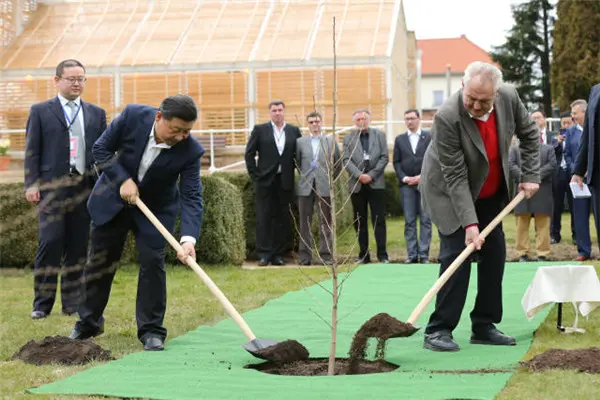Early in one morning at Beijing Capital International Airport days before Chinese President Xi Jinping's state visit to the Czech Republic, a 71-year-old Chinese tourist was waiting to board his plane to Prague, his dream city.
Lao Bian was on a trip to Europe starting from Tianjin. It was the first time for him to go to the Czech Republic on a direct flight from Beijing to Prague, which takes about 10 hours.
"I used to be an automobile mechanic," said the retired old man. "I'm deeply impressed by the machinery and cars made in the Czech Republic."
In his mind, the Czech Republic has a strong and solid industrial foundation, which aroused his interest to go to visit and experience.
The direct air link between Prague and Beijing officially went into operation on Sept. 23, 2015. It has significantly boosted ties between the two countries and led to their more intensive cooperation in the fields of trade, investment, tourism and health care.
Czech Prime Minister Bohuslav Sobotka said he considers this "very good news" for the Czech Republic. It's also good news for the Chinese people who are filled with very positive feelings towards the Czech people.
Speaking of Prague, the first things that might come into the minds of the Chinese people are its Old Town Square and Vltava River.
The Czech Republic has much more than this. The author Milan Kundera and his famous novel "The Unbearable Lightness of Being," author of "The Metamorphosis" and "The Castle" Franz Kafka, the animation character of Mole, and of course the well-known crystals and local beer are all so familiar to the Chinese people.
Prague's lure attracts Chinese people to travel to the Czech Republic, as well as to work and trade there.
In an article written for Czech newspaper the Pravo Daily, Xi mentioned that people-to-people and cultural exchanges between the two countries are flourishing.
"The Czech Republic is an attractive destination to Chinese tourists, who made a record number of more than 300,000 visits here in 2015, making tourism a bright spot in China-Czech cooperation," Xi wrote.
Meanwhile, the Czech Republic has become the second biggest trading partner of China in the Central and Eastern Europe (CEE) region, and China has been the Czech Republic's second biggest trading partner in the world, only next to the European Union. The Chinese-Czech two-way trade topped 11 billion U.S. dollars in 2015.
To welcome Xi's visit, more and more Chinese elements can be seen in Prague. Chinese and Czech national flags are fluttering along the main streets near the Prague Castle, the seat of the President's Office.
Standing above a traffic roundabout by the Vltava River is a huge billboard with a slogan in both Chinese and Czech: "Welcome to the Czech Republic."
Xi's visit has brought the two countries closer.
"The Chinese president's visit to Prague is a very exciting moment and I am very proud that my country is the first and the only country he is visiting in the Central and Eastern Europe," Czech antiquary Oldrich Hejtmanek told Xinhua in downtown Prague.
Hejtmanek's gallery has a collection of over 1,000 Chinese works. He said that his clients used to be mostly from China but now the situation is changing.
"More local people have begun to understand and appreciate the Chinese arts. I want to show them, especially young people, how incredible the Chinese arts are," he said.
Hejtmanek said that he "100 percent" believes Xi's visit would be a new start for relations between China and the Czech Republic as well as the CEE countries.
China and the Czech Republic established diplomatic relations in October 1949, only five days after the People's Republic of China was founded.
After 67 years of time-tested development, bilateral ties have entered a new phase of fast and fruitful development. Enditem
(Xinhua reporters Wang Fengfeng, Bai Jie and Luo Jun contributed to the story)
 简体中文
简体中文

